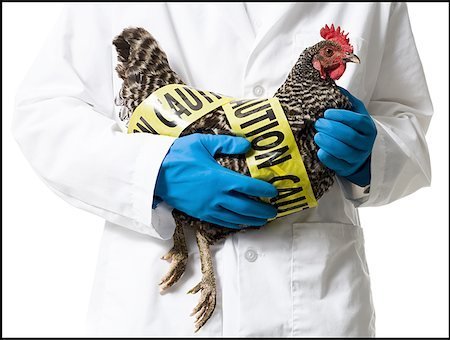


INTRODUCTION
Bio security in Indian poultry farming is of extreme importance as it effects the overall physical health of the Indian poultry industry and financial health of the poultry farmers. Bio security means taking steps to ensure good hygiene practices are in place so that the risk of a disease occurring or spreading is minimised. Good bio security should be practiced at all times, not just during a disease out break. Taking the right measures can help protect your birds, your business, the poultry industry and the community.
Good biosecurity helps keep out exotic poultry diseases such as avian influenza and Newcastle disease. It also reduces the risk of zoonotic diseases such as salmonella becoming established. It limits the occurrence and spread of diseases and helps to protect your neighbours, public health and the villages. It improves overall broiler flock health and cuts cost of diseases treatment, reduces losses which could improve farm profitability.
Biosecurity has three major components isolation, traffic control & sanitation.Isolation refers to the confinement of the animals within a controlled environment.A fence keeps yours birds in , but it also keeps other animals out.A poultry premises should be fenced and as a matter of principle the outside traffic(human beings/vehicles) should not be allowed to enter the premises except when it is a must.In such an event the outsider entering the premises must pass through a cess pool of water containing disinfectant to guard against any outside infection.
Infectious diseases can be spread from farm to farm by:
- Introduction of diseased birds
- Introduction of healthy birds who have recovered from disease but are now carriers
- Shoes and clothing of visitors or labourers who move from flock to flock
- Carcasses of dead birds that have not been disposed of properly
- Impure water , such as surface drainage water
- Rodents , wild animals and free flying birds
- Insects
- Contaiminated feed and feed bags
- Contaiminated delievery trucks
- Contaiminated premices through soil or old litter
IMPORTANT POINTS:-
- The space between the sheds should be kept free from the accumulation of stagnant water/weed growth which are breeding ground of bacteria.
- Spreeding of dry lime powder (CHUNNA) is a good practice to achive this objective.
- Soon after the disposal of old flock and before arrival of new flock the bird cages must be air water jetted and burnt with the gas flame to take care of any infectious material sticking on to them.
- The shed should be thoroughly cleaned, whitewashed, disinfected and fumigated.
Biosecurity checklist
Properly implemented biosecurity measures will limit the spread of disease causing organism.
When these are combined with cleaning and disinfection, vaccination and strategic treatments , many pathogens can be reduced to non-infectious levels.
Remember – different infectious agents spread by different methods , so use appropriate measures against each type
Site location and design , and density of Indian poultry in a given geographical area are vital. When planning in newsite, there is the opportunity for very effective biosecurity to be implemented at the design stage. However biosecurity practices must concern themselves with practicalities , rather than a theoretically ideal set up.
All sites have traffic-personnel,feed,stock and equipments – but this should be kept to an absolute minimum.
Only essentials vehichles should have access to a site, and these should be disinfected on arrival
Priority should be given to biosecurity measures on breeding sites since errors here are magnified greatly at the commercial sites.
Site decontamination , turnaround times and a well audited and structured cleansing and disinfections procedures should be in place for all sites.
Effective vermin(wild animals and wild birds) control must be maintained.
Only disinfectants with independately proven broad spectrum efficacy against viral and bacterial pathogens should be used and at manufacturers stated dilutions and directions.

